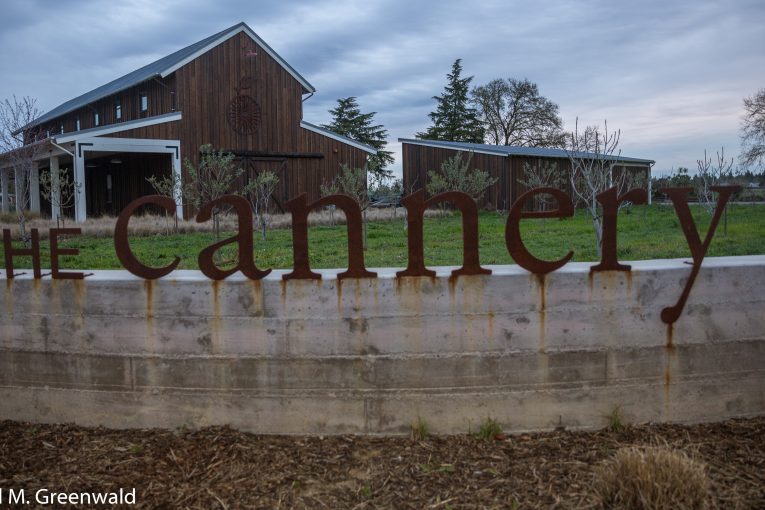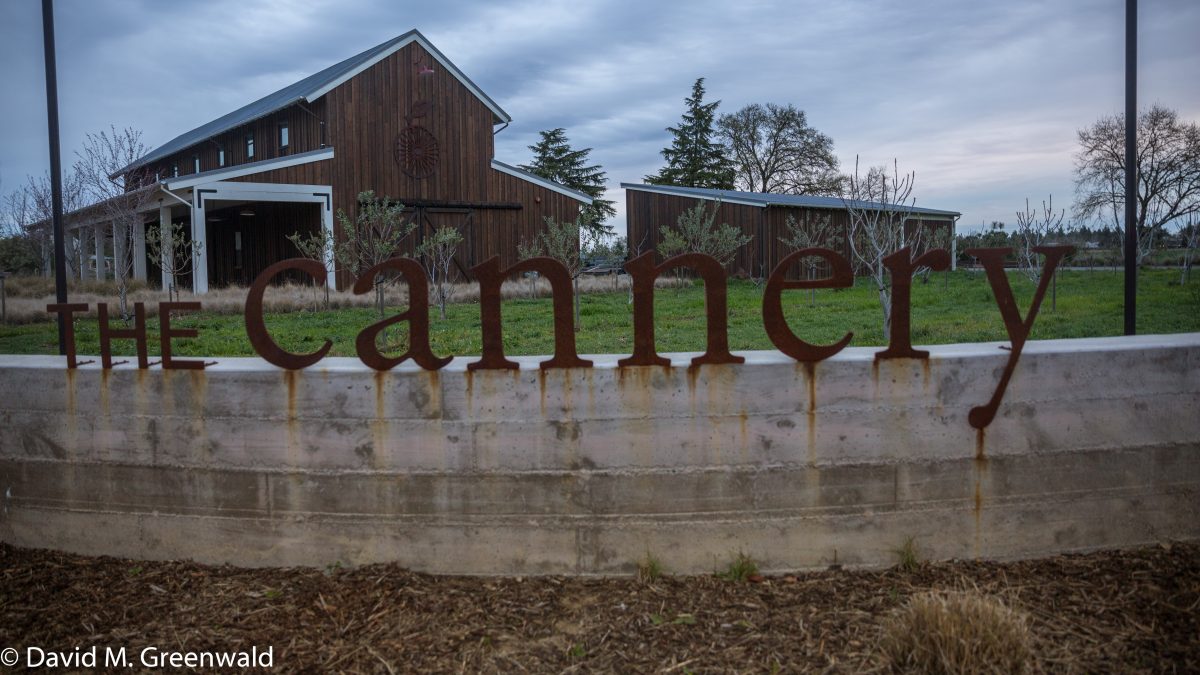

Last spring, the Cannery project put up another proposal that went over badly in both the Cannery neighborhood as well as the community as a whole. The proposal for an LA Fitness was opposed by existing fitness centers, while the high density housing drew neighborhood concerns about traffic and circulation pattern.
Over the next eight months, the developers held a series of community meetings, made some revisions to the plan and most importantly emerged with a proposal that does most what they wanted with the full support of the neighbors.
While the proposal for an increased footprint for the fitness center is gone, the new proposal calls for 84 multi-family units, a height increase to three stories and 48 feet, and an overall square footage increase to 182,000.
Planner Eric Lee told the council, “We feel that proposal before you is a better project (than 2016).” He added, “Staff feels that many of those issues have been resolved.”
George Phillips representing the developer acknowledged that the proposal in March caused concern, but noted that the result of the concern is that they did outreach in the form of Town Hall meetings with the residents which not only helped them get support for what they were doing, but helped them understand overall concerns with the residents about the neighborhood.
Mr. Phillips acknowledged that the delay in March was primarily due to the Fitness user and the size of the proposed building.
“That user has since gone away,” he said. “We are sticking with the 25-foot anchor tenant on the West side.”
In addition, there were concerns with the multi-family development and the lack of parking that many residents expressed concern would cause spillover traffic into the neighborhood. They have also relocated the daycare use in order to improve circulation.
George Phillips noted that there is concern that these multi-family units should be utilized by families rather than students and they will be looking to take steps to direct it away from student  housing.
housing.
“We think we have a better project before you this evening,” George Phillips stated echoing the sentiments of staff. “We are still going to be pursuing the anchor tenant on the east side, which helps with the financing. Right now we don’t have that anchor tenant”
A number of residents from the neighborhood came to speak out in favor of the project – and none spoke out against it.
One resident made it clear that quite a few people are in favor of finishing this neighborhood off and she acknowledge, “We failed to speak up adequately in the past.”
Several other residents acknowledged the work of the developers to meet with the neighborhood and attempt to resolve their concerns. For the most part, the residents who spoke were very supportive of the project as presented on Tuesday night.
Councilmember Lucas Frerichs noted that when Leland Properties originally proposed this, there was opposition both in the neighborhood and in the community to the proposal.
“While frustrating, I think it was an opportunity that was created for additional outreach to neighbors,” he said. “There has been listening to the neighbors and I think they have made this proposal that much better.”
He added, “I think it’s really improved the proposal overall. For me, the key is to get it approved so the residents in the Cannery can get their long-awaited neighborhood and mixed-use shopping center they were promised originally.”
Gloria Partida, “I’m also pleased with the outreach that was done and the effort that was made to address the concern that were had by the neighbors there.” She does have mixed feelings about losing some of the commercial space from the Cannery Village Marketplace.
Mayor Pro Tem Partida suggested that the developers “reach out to some unique businesses to go into that space rather than the chain pop ups that we have where the entirety of Davis looks like every other city.”
While Mayor Brett Lee would ultimately support the project, he offered some more critical remarks than his colleagues.
He said, “The residents are interested in having something built. This empty open-space is not a great situation for the residents who were looking forward to having some amenities that would  directly benefit them.”
directly benefit them.”
Mayor Lee expressed concern however that the affordable housing agreement “is sort of this flexible agreement.” He noted that by rights, they have the ability to ask for 15 percent of the units be affordable whereas they are paying in-lieu fees for the equivalent of two units.
“That’s an issue,” he said. “There’s also an issue of LEED silver versus LEED gold.”
The past projects that they have approved have been LEED gold whereas this one is LEED silver.
“I’m willing to compromise in those areas,” he said. He said, “For the near neighbors (and) for the Cannery residents themselves, for us to get in a Tug of War with Leland, and delay this even further, would not be fair to them.”
He noted that $10,000 for traffic calming is not sufficient. The developer and his colleagues agreed to increase that to $25,000.
Mayor Lee agreed with public commenter Connor Gorman, “I don’t like the idea that we are purposefully trying to exclude students.” He said, “The general concept I find a little bit jarring or offensive.”
Dan Carson pushed back that we have a focus on millennial and work force housing here. He has noted that “we’ve tried to focus on the amenities and the needs of different groups in this town.” He said, “We’ve all been supportive of a very significant expansion of student housing and worked hard to make sure the campus follows through with its commitment.”
He noted with respect to housing for families and workers, “we have some catch up work to do there.”
“This is a very good location for that kind of housing,” he said. “I think it’s sound land use principles that are involved here… We can’t address everybody’s needs all in one project. I think we’re moving well down the track of trying to meet the overall community needs identified in our general plan, in a series of projects. I don’t there’s anything wrong with that.”
Will Arnold pointed out that they have not suggested doing anything with regards to students at this point. He said, “I’m satisfied that the nature of the unit mix… achieves what we sort of want it to achieve.”
Councilmember Arnold added, “Personally I’m fine leaving it up to the landlords how they want to market it, and when they want to do the leases.” He said, “I don’t want to add any further restriction on that.”
With that, the council amended the motion to include the $25,000 for traffic calming and passed it on a 5-0 unanimous vote.
—David M. Greenwald reporting


Thank you Brett and Connor for pointing out that we still need student housing. Really don’t understand the need to exclude students from the Cannery.
LOL, students are pretty much excluded from WDAAC and that seemed okay with you.
Pretty much any single family developments are not going to be for students. In this case, you have a market rate, multi-family housing, that’s a different animal.
I believe that you are misunderstanding the term “multi-family housing”:
https://en.wikipedia.org/wiki/Multi-family_residential
Certainly, students also live in apartments (other than “megadorms”). The article mentions that steps are planned to direct it away from student housing, but does not mention what those steps are.
Does anyone know how many apartment units there are (or will be), in the Cannery? (Both market rate and Affordable?)
Woops – my mistake. In looking at the exchange between Keith and Craig more carefully, I don’t think that Craig was misunderstanding the term.
In any case, I’m still wondering what the total number of purposefully-designed rental units there are (or will be), in the Cannery. Including market-rate, Affordable, and accessory dwelling units.
I’m also curious as to what steps are being considered to direct such housing away from the student market. (I’m not convinced that this is necessarily a good thing, nor do I see how it would be effective, since details are not discussed.)
BP, I was thinking the same thing.
Damn, now I’m gonna have to say this stuff?
LOL, BP was a good alias. But my two favorites were Carlos Danger and Growth Izzue.
Do you know why I picked Growth Izzue as an alias at that time?